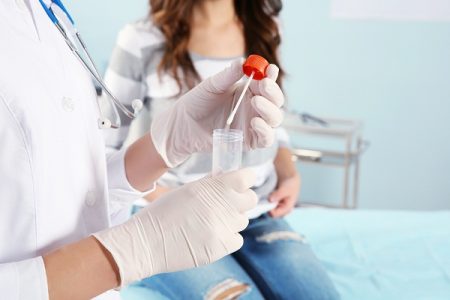What Is Chlamydia Infection?
- Updated on: Jun 5, 2024
- 3 min Read
- Published on Oct 3, 2019

Chlamydia Disease Overview
Chlamydia infection often referred as Chlamydia, is a sexually transmitted disease caused by the bacterium Chlamydia Trachomatis. The bacterium Chlamydia Trachomatis occur only in humans. It is the most common sexually transmitted infection (STI) and can infect both men and women. This disease can spread during vaginal, oral or anal sex. The person doesn’t need to experience penetration in order to get it.
Touching genitals of an infected person can also transmit this disease. Also, it can be passed from an infected mother to the baby during delivery. The infection is carried in bodily fluids like precum, semen and vaginal fluids.
Women can get chlamydia in the cervix, rectum and throat while men can get Chlamydia in the urethra (inside penis), rectum and throat. Thus, if a person is having unprotected sex with someone whose STI status is not known, should get tested after intercourse.
Read about causes of Chlamydia.
Symptoms of Chlamydia
Most people who are infected do not show any outward symptoms in early stages. It may take a week to develop an infection. However, in later stages, it causes serious health issues.
In women, symptoms shown are vaginal discharge or urination with burning sensation while in men, symptoms may include discharge from the penis, burning sensation during urination and pain (and/or swelling) in both the testicles.
This bacterial infection can spread to the upper genital tract in women thus causing pelvic inflammatory disease (PID) which results in infertility or ectopic pregnancy.
The person may also suffer from an eye infection which is quite uncommon. Eye infection can spread by personal contact, flies and contaminated towel in areas with poor sanitation.
Read more about symptoms of Chlamydia.
Diagnosis and Treatment
Diagnosis is done often by screening and is recommended for sexually active people. Testing is done on the swab from cervix, vagina or urethra or from urine. At times, rectal and mouth swabs are also used to diagnose infection in localized areas.
Oral antibiotics (azithromycin or doxycycline) in multiple doses or just one dose are given as medications in chlamydia. Erythromycin or azithromycin is recommended for babies and for pregnant women.
Read more about treatment of Chlamydia.
Read more about diagnosis of Chlamydia.
Prevention of Chlamydia
Prevention can be done by having sex only with one partner who is not infected and by using condoms (dental dams in case of oral sex) while having sex.
An infected person is generally advised not to have sex for about seven days or until free from symptoms.
Along with Chlamydia, HIV, syphilis and gonorrhea should be tested.
Statistics (Facts about Chlamydia)
Chlamydia is one of the most commonly transmitted infections. Worldwide, about 4.2 % of women and about 2.7% of men are affected with this disease.
According to a report in 2015, about 61 million new cases were reported globally and in the United States and India, about 1.4 million and 1 million cases were reported respectively.
These infections are most commonly reported in people between the age group of 15 to 25 and were more common in women.
In the year 2015, about 200 people died of Chlamydia globally.
Am I at risk for Chlamydia?
Though women are more likely to get infected, men and women both are at risk. If a person has sex with more than one partner, he/she is at risk. The rate of infection is highest in young women and this may be because their cervical cells are immature and vulnerable to infection.
Doctors generally recommend that all sexually active women should get themselves tested every year for chlamydia. Having a past history of any sexually transmitted disease lowers the resistance against chlamydia.












